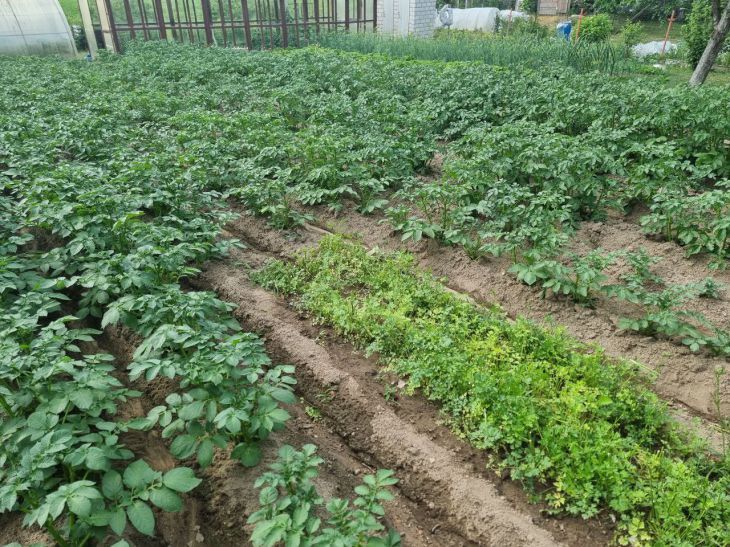When growing potatoes, the question of the need for hilling during drought becomes especially relevant.
Dry weather presents a serious challenge for gardeners, as lack of moisture can significantly reduce crop yields.
How to properly care for potatoes in drought conditions to ensure a good harvest?
The Importance of Hilling Potatoes
Hilling potatoes is an important agricultural technique that helps increase yields and improve the quality of tubers.
During hilling, soil is added to the stems of plants. This helps protect the root system, create optimal conditions for the formation of new tubers and prevent existing ones from turning green.

It is especially important to carry out hilling during dry periods, as it helps to retain moisture in the soil and protect plants from overheating.
Overheating protection
During drought, the soil surface heats up more, which can negatively affect the potato root system.
Hilling creates an additional layer of soil around the plants, which protects the roots from overheating.
This helps maintain a more stable soil temperature and prevents it from drying out. Thus, hilling promotes better potato development in high temperature conditions.
Preserving moisture in the soil
One of the main advantages of hilling during drought is the ability to retain moisture in the soil. The added soil reduces water evaporation, which is especially important during dry periods.
Due to this, plants receive more moisture, which is necessary for growth and development.
Gardeners note that properly performed hilling helps to significantly improve the condition of potatoes in conditions of moisture deficiency.
Improving soil aeration
Hilling also helps improve soil aeration. Adding soil around plants improves oxygen access to the roots, which has a positive effect on their health and development.
In drought conditions, the potato root system needs a good supply of oxygen to effectively absorb nutrients and water from the soil.
Preventing Soil Erosion
Drought is often accompanied by strong winds, which can contribute to soil erosion.
Hilling helps reduce the risk of erosion by strengthening the top layer of soil around plants.
This prevents the leaching of nutrients and the destruction of soil structure, which is especially important for maintaining potato yields.
Weed control
Hilling also helps in weed control. Drought creates favorable conditions for the rapid growth of weeds, which compete with potatoes for moisture and nutrients.
Adding soil around the potato stems makes it difficult for weeds to grow and makes them easier to remove.
This allows the potato to receive more resources for growth and development.
Reducing the risk of disease
Dry weather can promote the spread of some potato diseases, such as late blight.
Hilling creates additional barriers that reduce the likelihood of plant infection.
Strengthening plants through improved aeration and moisture retention also helps them become more resistant to disease.
Earlier we talked about how to get rid of weeds in garden beds.








